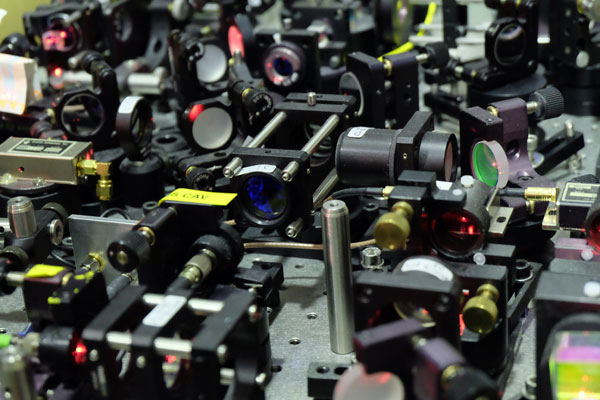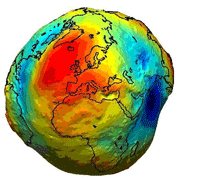|
OPTICAL CLOCKS
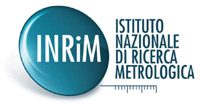 INRiM INRiM
Istituto Nazionale di Ricerca Metrologica, Torino, Italy
Comparison of distant optical clocks for tests of general relativity
One of the main peculiarities of LSM is its extremely-low-radioactivity environment; nonetheless also its location, at 1200 m a.s.l. and below other 1700 m of rock, is a unique feature, which makes LSM the perfect place for novel physics experiments.
One of such experiments is currently being performed to test general relativity with optical clocks, which are the most precise timekeepers available today. According to the General Relativity theory, a gravitational field affects space and time. This means that if a clock is moved by 1 m above the ground level, its ticking frequency changes by 10-16 (in relative terms). Today, we have at disposal
extremely precise clocks, which are sensitive to small changes in height. These devices are atomic clocks based on optical transitions: they are routinely operated with a precision of 1 part in 10-16,
and the most performing achieve 10-18. Such high precision can only be obtained with a thorough knowledge of the environment where atoms are probed (temperature, magnetic field, seismic noise….). Among these parameters is the clock heigth above the Geoid: it appears clear that it must
be known with a 1-cm precision in order to claim a clock accuracy of 10-18.

On the other side, the demonstration that clocks can indeed be used as sensors for the gravitational field can open new perspectives in geodesy, paving the way for much improved resolution.
The experiment carried out at LSM aims at demonstrating that a stronger interconnection between geodesy and frequency metrology is feasible. An optical clock based on Yb atoms, placed at the Italian National Metrology Institute (INRIM) in Turin-Italy, is being compared to a portable clock based on Sr atoms, developed by the German National Metrology Institute (PTB) and moved to LSM. The height- difference between the two is 1000 m, allowing an unprecedented experiment on the relativistic effects on high accuracy clocks in the terrestrial potential.
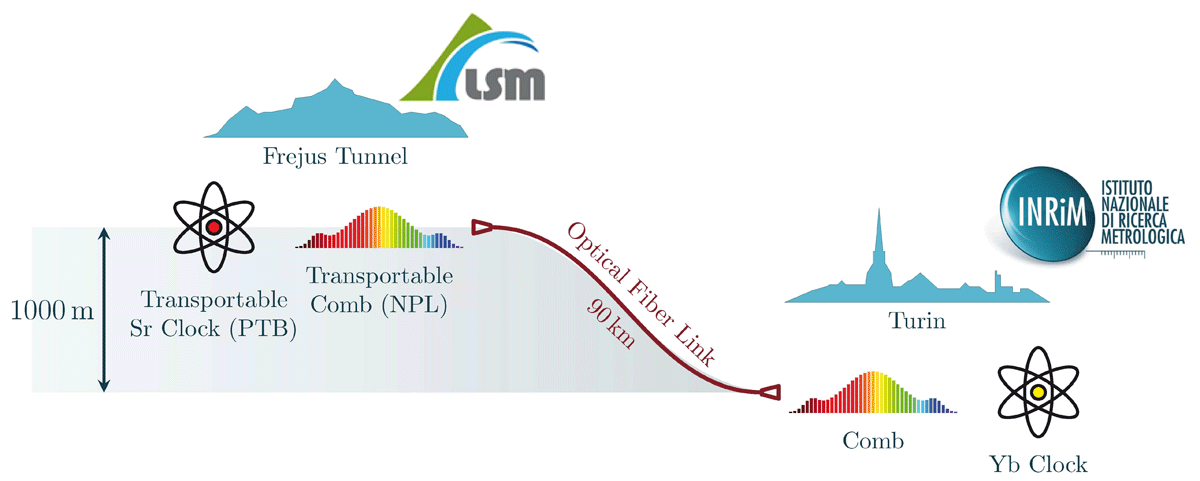
It must be stressed as well that the clock transportation is not a trivial task at all, since these devices include ultra-high vacuum apparatus, several lasers and precision optics; in addition, the clock's characterization must be repeated in the host environment to avoid unexpected biases. This has never been demonstrated and is an additional challenge in this experiment.
How can two clocks be compared, being hundreds of kilometer apart? Traditional techniques for the transfer of time and frequency signals are based on satellites, such as the GPS. However, the resolution offered by these techniques is too poor if compared to the precision this experiment aims for. Thus, light is transmitted between the two labs along a commercial optical fiber, where a channel of the telecom grid is dedicated to this experiment. In turns, light transmitted through the fiber is interfaced with the clocks used in the two labs using photonic devices known as “optical frequency combs”. A portable comb developed by the National Physics Laboratory (NPL) of UK has been installed at LSM and another one is operated at INRIM.
The PTB clock has been installed on February 3rd at LSM and is now being characterized. The comparison with INRIM clock will last two weeks. Afterwards, the portable clock placed in Modane will be moved to INRIM and the comparison will be repeated with the two clocks at the same height. The resulting difference in the gravitational potential will be compared with that obtained with classical methods: a precise measurement of the heigth of the two labs has already been performed in 2013 by the geodesists of Hannover University and Politecnico of Torino.
The metrological optical fiber connection which has been developed for this experiment makes LSM a crucial node in the European-scale network under realization between the main National Metrology Institutes and research institutions of the continent. The backbone Turin-Modane-Lyon-Paris will be completed in 2016, providing LSM with precise time and frequency references.
This experiment is the result of the collaboration between the largest European metrological national institutes (NPL, PTB, OBSPARIS, CMI, INRiM), academic institutions with the highest level geodetic competences (Hannover University and Politecnico di Torino) and the equipment, the facilities and the expertise of LSM, and is funded within the EU project “International Timescales with Optical Clocks” (the EU European Metrology Research Program is jointly funded by the EMRP participating countries within EURAMET and the European Union.)
Relativistic effects related to geodesy tested with optical clocks
The SI unit of time, the second, is currently defined in terms of the frequency of the microwave transition between the two ground state hyperfine levels of the 133Cs atom ( http://www.bipm.org/en/si/base_units/second.html ) and it is realized by caesium atomic clocks.
However the most advanced new generation of atomic clocks, the so called optical clocks, has now reached levels of stability and accuracy that significantly surpass the performance of the best caesium primary standards. As a result, the possibility of a future redefinition of the second is being considered by the international metrology community.
Relativistic effects related to gravity potential affect atomic clocks. On the other hand, optical clocks have huge potential for geodesy with unprecedented features: high precision, high temporal and spatial resolution, and the possibility of measuring the geopotential directly rather than indirectly.
However, from geodetic research it is well known that tidal, weather and climate effects perturb the geopotential at a level corresponding to several parts in
1e-17
in fractional frequency. International timescales based on clocks in this dynamic geopotential may thus only be established if these effects are quantitatively understood. Interactions with the geodesy community are therefore essential if this goal is to be accomplished.
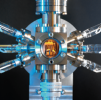
The EU European Metrology Research Program (the EMRP is jointly funded by the EMRP participating countries within EURAMET and the European Union.) has funded the project International Timescales with Optical Clocks (ITOC), that gathers together the largest European Institutes for Time and Frequency metrology. ITOC will carry out a proof-of-principle experiment to investigate relativistic effect related to geodesy with an unprecedent precision.
The experiment will be possible thanks to a tight collaboration among the largest European metrological national institutes (NPL, PTB, OBSPARIS, CMI, INRiM) * , academic institutions with the highest level geodetic competences (Hannover University and Politecnico di Torino) and the equipment, the facilities and the expertise of LSM.
* NPL (National Physical laboratory, UK), PTB (Physikalisch-Technische Bundesanstalt, Germany), OBSPARIS (Observatoire de Paris, laboratoire SYRTE, France), CMI (Cesky Metrologicky Institut, Czech Republic))
Two optical clocks, developed by INRIM and PTB, will be located one at INRiM in Turin (Fig.1), and the second at the Laboratoire Souterrain de Modane (LSM) in the Fréjus tunnel (Fig.2). A very precise technique will be implemented by INRiM to compare the clocks using an optical fiber between the two labs, and two photonics devices called optical frequency combs, run by INRiM and NPL. The result of the comparison will be related to the terrestrial geopotential differences measured by the geodesists of Hannover University and Politecnico of Torino.
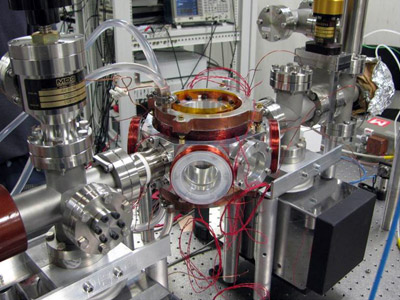
|
Fig. 1 - The optical clock at INRiM based on neutral Ytterbium atoms will be part of the ITOC INRiM-LSM experiment (Courtesy of INRiM) |
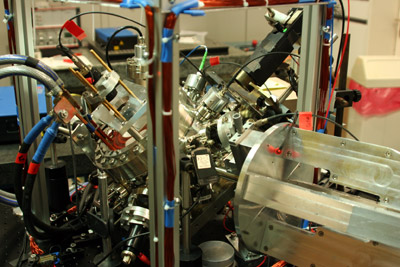 |
Fig. 2 - The transportable optical clock of the German PTB based on neutral Strontium atoms will be installed at LSM for the ITOC INRiM-LSM experiment (Courtesy of PTB) |
LSM offers a unique facility, a scientific laboratory inside the mountain at a relevant height, that could be linked to a metrological institute (INRiM) by a 100 km long optical fiber to accurately compare remote optical clocks (Fig.3). This INRiM-LSM test-bed offers a large gravity potential difference, with a height difference of approximately 1000 m between the two sites, and it will allow an unprecedented experiment on the relativistic effects on high accuracy atomic clock in the terrestrial geopotential.

Fig. 3 - The optical fiber connection between INRiM and LSM will allow precise comparison between remote atomic clocks.

Scheme of the ITOC INRiM-LSM experiment: Two optical clocks hosted in the Fréjus tunnel and in Torino will be compared using an optical fiber to investigate the relativistic effects due to the terrestrial geopotential at an unprecedent level of accuracy.
People from LSM and Politecnico di Torino measuring the height of LSM with the ultimate precision needed for the ITOC INRiM-LSM experiment
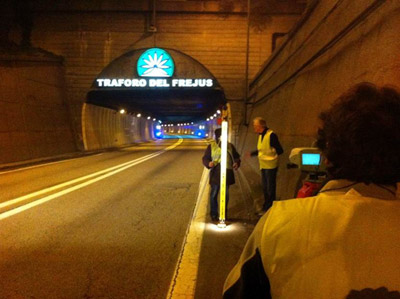 |
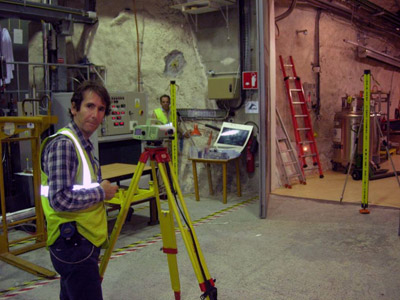 |
| Entering the tunnel after stopping the traffic |
Inside the LSM lab (Courtesy of Turin Politecnico) |
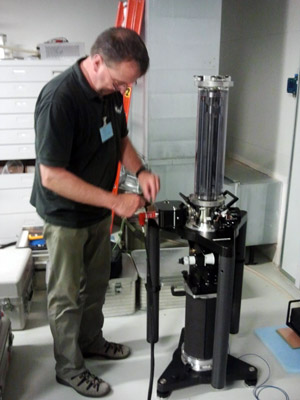 |
People from Hannover University measuring the gravity acceleration at LSM with the ultimate precision needed for the ITOC INRiM-LSM experiment.
(Courtesy of University of Hannover) |
|




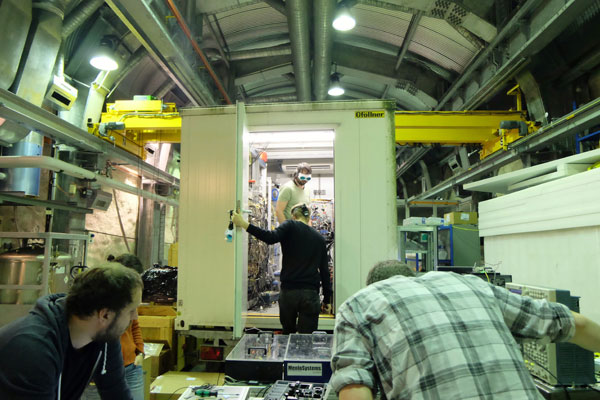 installation phase, control of optical benches
installation phase, control of optical benches